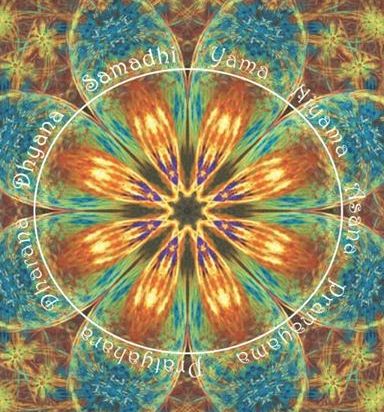Ashtanga Yoga
 Ashtanga Yoga is the eight limbed path of yoga described in the Sage Patanjali’s foundational yoga text, the Yoga Sutras.
Ashtanga Yoga is the eight limbed path of yoga described in the Sage Patanjali’s foundational yoga text, the Yoga Sutras.
The first two limbs are the yamas and niyamas, the restraints and observances. The next three are asana, pranayama, and pratyahara, which are the progressive stages that enable the seeker to rise in the art of yoga.
The first five aspects of yoga are individual efforts for the evolution of the consciousness, and represent the outer journey of yoga. The final three limbs – dharana, dhyana, and samadhi, are the universal or natural states of yoga, and represent the inner journey.
1. Yamas
Non-violence, truth, abstention from stealing, continence, and absence of greed for possessions beyond ones needs are the five yamas. These rules and restraints are laid down for the yogi to live harmoniously in society.
2. Niyamas
Cleanliness, contentment, spiritual zeal, self-study, and surrender of the self to the supreme Self or God are the five niyamas. As yamas are the universal social practices, niyamas are the individual practices necessary to build up the yogi’s own character.
3. Asana
Patanjali describes asana as perfect firmness of body, steadiness of intelligence, and benevolence of spirit. Whichever asana is performed it should be done with a feeling of firmness, steadiness and endurance in the body, goodwill in the intelligence of the head, and awareness and delight in the intelligence of the heart.
4. Pranayama
Pranayama is the regulation of the incoming and outgoing flow of the breath with retention. Patanjali cautions it should be practiced only after perfection in asana is attained.
5. Pratyahara
Pratyahara is the withdrawing of the senses, mind, and consciousness from contact with external objects, and then drawing them inward towards the soul.
6. Dharana
Dharana means focus of attention. Focusing the attention on a chosen point or area, within or outside the body is concentration. By it the functions of the mind are controlled and brought to one focal point.
7. Dhyana
Dhyana is meditation, a steady continuous flow of attention directed towards the same point or region.
8. Samadhi
When the attentive flow of consciousness merges with the object of meditation, the consciousness of the meditator, the subject, appears to be dissolved in the object. This union of subject and object becomes samadhi.
Connect
For more yoga articles, updates, classes and workshops, sign up for my newsletter at the top of the page or like on Facebook at Ann West :: Iyengar Yoga. You can contact me directly by email or call (858) 224-2484.